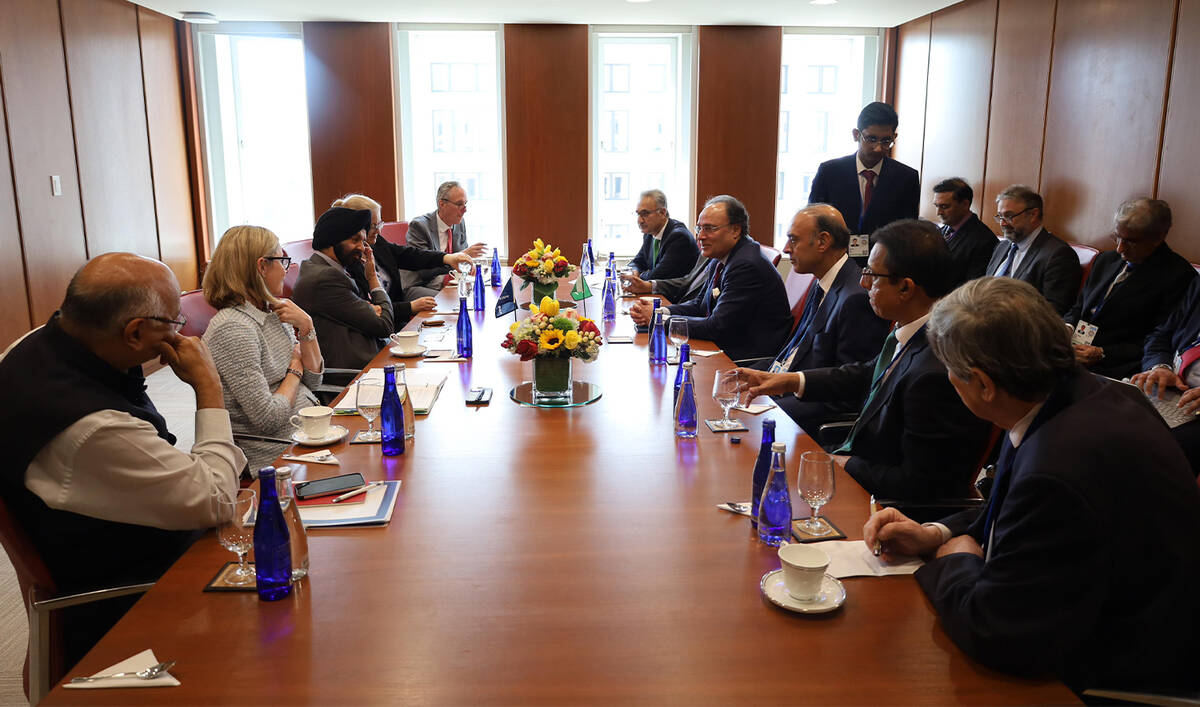DAVOS: The Central Lounge is thinning out, the Global Situation Space is deserted. The Public Figures Lounge — the abode of the global elite these past few days — is spookily vacant, though the specter of Tony Blair still hangs in the air.
The Davos party is over, and it is time to call it a day.
There is something sad about the Congress Hall on the last day of the World Economic Forum Annual Meeting. The corridors and staircases that throbbed to the chatter of the “masters of the universe” are poignantly silent. Even the Swiss cloakroom attendants — the most efficient and welcoming WEF staff — are bored and looking at their watches for the last shuttle back to base camp.
To hear some cynics talk, that’s more or less how it was for the duration of the annual meeting. “There’s nobody here this year” was a common refrain. “Everyone has stayed away” was another.
Well, if by everyone you mean the presidents of the US and China, I suppose they have a point.
While there was plenty going on at Davos 2019, it did lack the big beasts that attended the past couple of years. There was no real focal point, no plenary session you simply had to attend.
Actually, this made the main drag of the Congress Hall a rather more pleasant place to be. It was easier to get around, and it was possible to find some space to work or have a quiet conversation.
But in many ways, it was a tale of two Davoses. Outside the Congress, in the snowy streets and promenades of the Alpine resort, it was if anything more hectic than ever.
The Belvedere, as ever, was the hub of this activity. How much longer the Steigenberger hotel can fulfil this role must be open to question. On Wednesday night, the place was absolutely packed, its narrow corridors and comparatively small salons and cafes bursting at the seams.
One British wag compared it to the intergalactic bar in the movie “Star Wars,” where furry monster aliens got involved in fist-fights. An exaggeration, but not by much.
Outside the Belvedere, the WEF-izaton of Davos was almost complete. Virtually every shop, cafe and restaurant on the Promenade, the town’s main thoroughfare, was taken over by a bank, or a management consultancy, or sometimes a whole country — Ukraine, Poland and Russia rubbing shoulders uneasily in converted stores — for the duration of WEF. I wonder what the Promenade looks like for the rest of the year?
One notable exception is the souvenir shop across the promenade from the Morosani Schweizerhof hotel. The local lore is that the proprietors have no need of the inducements of the WEF because they already make a fortune during the week. Even the global elite have to buy their fake Swiss gold bars, Davos mugs and tacky Swiss branded fondue sets somewhere.
The nighttime hustle along the Promenade seems to get more hectic every year. My big regret at Davos 2019 is that I did not make it inside the legendary Piano Bar in the Hotel Europe, a must-visit every previous year.
I got to the hotel, but security staff refused to admit any more would-be crooners to the bar. A quick peek around the door showed why — it was jammed to the rafters with furry aliens and green creatures with two heads.
- Frank Kane is an award-winning business journalist based in Dubai. Twitter: @frankkanedubai






















